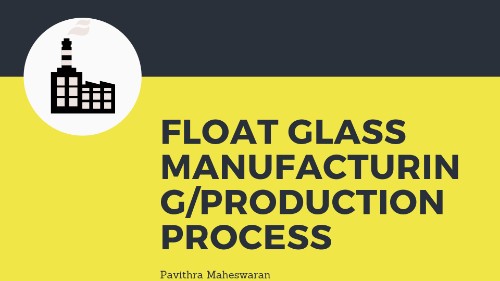Different types of cement are manufactured for different types of Application. Every cement has a different type of property required for the application. In general, The Cement is an adhesive (bonding agent) and is a cohesive (consistent) materials. It has the capability of bonding together particles of solid matter into a compact, durable mass. However, its primary function is to bind the fine and coarse aggregate particles together.
In this article, We are going to see all the different types of cement available in the industry. We are going to see each cement raw materials, properties, applications and testings.
1Ordinary Portland Cement(OPC):
About 70% of cement produced in Industry are was of this category of cement. We have three grades of Portland cement. They are Grade 33, 43 and 53. However pure Portland types of cement were not marketed nowadays in bags.
Properties: It produces a medium range of strength development and heat generation. The full strength development will take from 3 to 7 days based on the grade of the cement. And for better reaction water need to be sprinkled on the construction for 7 days to avoid any early crack in the surface of the cement.
Application: It is widely used in all ordinary concrete work, mortar, plaster etc. These kinds of cement is the one we use for the house and commercial complex building.
[table “3” not found /]
2Portland Pozzolana Cement(PPC):
This type of cement is the most common type available now on the market. It is made by blending 10% to 25% reactive pozzolana like fly ash or Calcined clay with ordinary Portland cement. It is also available in 3 grades.
Properties: The heat of hydration rate is slow.
Applications: Because of the slow hydration rate, It is used in mass concrete construction like high rise buildings, underwater concrete structures etc.,
3Sulphate Resisting Cement or Sulphate Resisting Portland Cement (SRC or SRPC):
The production of this type of cement is small in India. It is superior in resistance against sulphates. It is beneficial in the area where the concrete is vulnerable to sulphate attack in large amounts. It is expensive and not readily available because of the requirement of the special raw material.
Properties: High resistance to sulphates. The strength of this cement is also almost the same as the Portland cement.
Applications: Because of the special property of sulphate resistance, It is used in soil or saline groundwater exposed areas. And also used in the area of sea water.
4Portland Slag Cement or Portland Blast Furnace Slag Cement (PSC or BFSC):
It constitutes about 10% of cement production in Industry. The primary raw material is the slag from the steel manufacturing industry. Every ton of cast iron in steel industry produces about 0.3 tons of blast furnace slag which is used to manufacture slag cement.
Properties: Slag cement has a lower [simple_tooltip content=’Heat generation during the water and cement reaction’]heat of hydration[/simple_tooltip] and better [simple_tooltip content=’non reactive to sulphates’]sulphate resistance[/simple_tooltip].
Uses: Because of the low heat of hydration and the resistance to the sulphates, these cement are used where both properties required. Heavy or think construction requires the property of low heat of hydration and water stagnant areas required sulphate resistance. So this kind of cement is used in the dams and marine structures. It is used in the areas with high sulphate content in water.
5Low Heat Cement:
As the name suggests, it has a low heat of hydration. It finds its usage in concrete works such as gravity dam and thick retaining walls. It is strictly prevented from using it for thin concrete structure. Because of comparative low strength.
Applications: It is also used in massive concrete construction like massive footings, large raft slabs, pavements etc., Like these Low heat cement are normally used to produce pre-made block for bridges and dams and then it is installed in the construction locations.
6Rapid Hardening Cement:
This type of cement is quite similar to that of ordinary Portland cement because of their texture. However, it is finer than the latter. It is also known as ‘high early strength cement because it produces strength at the age of 3 days equivalent to the seven days strength produced by ordinary portland cement with the same water-cement ratio. Since it attains higher strength in a shorter period, it can be used to remove formwork in an early stage itself. You can buy this cement at 37 Kg/ 50Kg packages or 1 or 2 tonnes packages.
Properties: High strength attainment in the first 3 days. Because the cement is fine, the reaction takes place at much higher speed compared to normal portland cement. so the strength attainment takes a much shorter time. Colour in grey colour. 3rd-day compressive strength is around 35 MPA. 28th-day compressive strength is around 65MPA.
Application: This special properties of this cement make it sued at where the smooth structure and fast setting is required.
7Concrete Sleeper Grade cement:
This is a special grade of material with very high strength and high lifetime, even at any kind of change in wheater condition. It is made out of steel reinforced concrete.
Application: It is generally used for the construction where the replacement is very difficult to carry out.
8Coloured Cement:
These types of cement are manufactured by adding 10% to 15% of suitable pigments (colouring agents) while grinding the cement. It is also called as Colcrete.
These types of colours are obtained by adding oxides into the composition of the cement. You can get the yellow, red, green and many varieties of colours.
Applications: These cements are used for floor works, wall works and many other decorative places.
9White Cement:
It is manufactured by adding iron oxide (Fe2O3) and manganese oxide (MnO) in ordinary portland cement and the limestone is the primary raw materials. The strength of the white cement is little lower than the ordinary Portland cement. White cement are available in 5kg, 10Kg, 20 kg and 50 kg bags.
Properties: The Initial setting time of the white cement is above 100 Mints and final setting time is around 9 hours. at 3rd the compressive strength of white cement will be around 35 MPA. And 28th-day compressive streng will be around 65 MPA.
It has been extensively used in the joint area of marbles and ceramic tiles. Because of its white colour, it is used for all kind of decorative purpose. It is also used in the manufacturing of mosaic tiles. And this types of cement can’t be used for a high strength application.
10Oil Well Cement:
The oil Well Cement is a kind of sulphate resistance cement. But this kind of cement has much higher sulphate resistance because it is specially made for natural gas wells, Crude oil well and other petroleum product storage tanks.
Properties: This kind of cement can withstand at high temperature and the high pressure. This kind of cement has refractory properties, resistance to radiation property and acid proof Properties.
Applications: Used in construction of fume chimney, oil and gas well pipe contraction. And also used in the construction of application where high pressure and high-temperature properties required.
11Hydrophobic Cement:
The normal cement tends to set in places of high rainfall and humidity or when stored due to moisture present in the atmosphere. A water-repellent film can be formed around the cement when grinding cement clinker with a water-repellent film forming substance like oleic acid. This prevents the setting of cement.
Application: It is generally used where prolonged storage is required for cement such as a damp site, near military establishments, major air and seaports etc.,
12Masonry Cement:
This type of cement is manufactured generally from the raw material of portland cement, gypsum and limestone. The compressive strength of this type of cement usually is 2.5 MPa in 7 days. It is used in mortar for brickwork and also in rubber mortar.
Properties: the Intail setting time of the Masonry cement above 90 minutes and the final setting time is above 250 minutes.
13High Alumina Cement (HAC):
The high alumina has been exclusively manufactured from limestone and bauxite. This type of cement attains high strength in a short period. Because of its good sulphate resisting capacity, it is used for the construction of underwater related works. It is also known as calcium aluminate cement (CAC). HAC has the high compressive strength and is more workable than ordinary Portland cement.
Properties: The compressive strength of this cement in 1 day is above 50 MPA and 3rd day is above 65. The first-day compressive strength if this cement is much higher than any other cement available. the high alumina content in this cement brings the refractory property of this cement. The initial setting time of this cement is around 60 minutes. And the final setting time is around 180 minutes. The colour of this cement is mild yellow.
Uses: This types of cement are used in high temperature and high strength required construction. It is used as a mortar for the kiln and furnace refractory bricks.
14Super Sulphated Cement:
It has been manufactured by the combination of granulated slag, calcium sulphate and portland cement.
Properties: The compressive strength of this cement on the 3rd-day is 15 – 20 MPA and the 28th-day compressive strength is 45 to 50 MPA. The expansion for this cement should be less than 5%.
Applications: It produces less heat of hydration during the setting time. It is generally used in where the soil contains a high amount of sulphates.
15Expansive Cement:
This kind of cement is not used for construction. They are used to demolish or create a crack between two rocks or create in the mountains. Series of a hole is made in the mountains, and the water plus this expansive cement is mixed and poured. The cement will starts to expand with high strength and creates a crack between the rocks. Without explosives, the rocks can be split into several parts.
Properties: During expansion, this cement creates pressure equals to 120 MPA. Variety of grades are available to work at different temperatures. The shelf life of this cement is much higher than any other types of cement; it is around 20 Months to 26 Months.
Applications: Used in granite mountain cutting. And used in a variety of application where breaking a structure without explosion.
16Quick Setting Cement:
This type of cement is used where quick setting time is needed in a short period. The also know as fast setting cement. Available in 25Kg/50kg/jumbo bags.
Properties: The initial setting time is less than 10 minutes. And the final setting time is less than 5 Hours. Compressive strength can reach up to 20 Mpa in 5 Hours. In 1 day the compressive will reach near to 40 MPa, and 3rd-day strength will reach near to 50MPa.
Application: It is applied as a spray in the construction location like mine areas. Because of the fast setting property, it is used in areas where the application needs to be quick.
Conclusion:
In this article, We have covered all the types of Cement that are available in the market. And also we saw the Grades of Cements, Ingredients of Cements, Properties of the cement & etc.,
IGNITE YOUR INNOVATION…
PURSUE WITH PERSISTENCE…
TASTE THE FRUIT OF SUCCESS…



Very nice